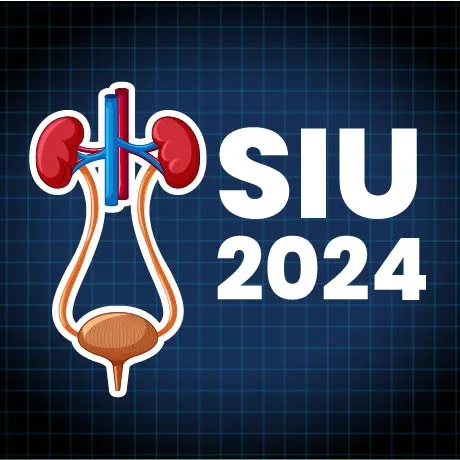Speaker: Dr. Rohit Joshi, India
Important Takeaways
-
Suction in RIRS is emerging as a promising technique to improve stone clearance, visibility, and reduce complications.
-
Integrating suction aligns RIRS stone-free rates closer to percutaneous nephrolithotomy (PCNL), meeting the demand for minimally invasive treatments.
-
Suction methods have evolved from manual syringe-based techniques to advanced integrated scopes with built-in suction channels.
-
Access sheaths with suction provide deeper reach and create a "vacuum cleaner effect" to clear stone fragments during scope withdrawal.
-
Benefits include enhanced visibility, lower intrarenal pressure, and shorter operative times by avoiding repeated instrument removal.
-
Key challenges include strain on equipment, limited scope flexibility, and risks of mucosal injury with excessive suction.
Key Highlights
Suction as a New Avenue in RIRS:
Suction is emerging as a promising technique in retrograde intrarenal surgery (RIRS), especially for improving stone-free rates and reducing procedure-related complications. Dr. Joshi outlined the journey of suction technology from initial manual techniques to advanced integrated devices. The introduction of suction aims to enhance stone clearance, improve visibility, control intrarenal pressure, and decrease operative time, offering both immediate and long-term benefits for patients undergoing RIRS.
Importance of Suction in Stone Clearance:
Effective stone clearance with minimised residual fragments is a critical goal in RIRS. Traditionally, PCNL was superior in achieving higher stone-free rates due to better evacuation of stone fragments. Dr. Joshi emphasised that integrating suction into RIRS aligns its stone clearance effectiveness closer to that of PCNL, which is essential given the rising patient demand for minimally invasive stone management.
Evolution of Suction Techniques in RIRS:
-
Manual Intrarenal Suction (MIST): Initial suction methods involved intermittent manual aspiration through a syringe attached to the ureteroscope. While cost-effective and straightforward, this method was dependent on the assistant’s skill, potentially leading to inconsistencies.
-
Device-Based Controlled Suction (DISS): This approach, introduced with dedicated suction devices (e.g., “Vinscope”), allows the surgeon to control suction directly via a foot pedal, removing the variability introduced by manual aspiration.
-
Integrated Suction Scopes: The latest generation of scopes incorporates built-in suction channels, permitting simultaneous irrigation and controlled suction. This technology is particularly effective in managing “dust” generated during laser lithotripsy, ensuring real-time removal of fine stone particles.
Mechanics of Suction through Access Sheaths:
Suction through access sheaths was emphasised as beneficial, particularly with newer bendable sheaths. Bendable sheaths allow deeper positioning into the lower calyces, where stone fragments often reside post-lithotripsy. Dr. Joshi described the “vacuum cleaner effect,” where the scope is gradually withdrawn through the sheath, bringing fragmented stones with it. He emphasised the importance of a calibrated two-French size difference between the scope and sheath for optimal suction efficiency and continuous irrigation.
Benefits of Suction in RIRS:
-
Enhanced Visibility: Suction allows the continuous removal of blood or debris, which otherwise obscures vision, especially in cases with higher intraoperative bleeding.
-
Reduced Intrarenal Pressure: By managing the flow and suction, intrarenal pressures can be kept lower, which may decrease postoperative complications like infection and inflammation.
-
Shortened Operative Time: Continuous evacuation of debris eliminates the need for repeated scope withdrawals, reducing the overall duration of the procedure.
Challenges and Concerns:
-
Potential Strain on Equipment: Using flexible access sheaths with suction places strain on the ureteroscope, which could impact the longevity of the device.
-
Navigational Limitations: When using bendable sheaths, secondary deflection of the scope can be limited, affecting navigation in complex calyceal systems.
-
Intrarenal Pressure Management: Calibration of suction settings is critical. Overly aggressive suction can increase strain at the ureteropelvic junction (UPJ) and cause unintended mucosal injury.
Clinical Evidence and Outcomes:
Recent studies report that RIRS with suction achieves a significantly higher stone-free rate, ranging up to 98% in single-session procedures. Studies conducted across multiple centres have shown promising results, with minimal complications and reduced need for ancillary procedures. In paediatric applications, suction RIRS has demonstrated similar efficacy and safety profiles, showing the versatility of the technique across age groups and stone types.
Practical Application and Recommendations:
Suction appears to hold promise for regular RIRS practice; however, Dr. Joshi recommends that practitioners thoroughly understand the capabilities and limitations of their devices.
He advised a conservative approach to using suction in cases with complex or delicate anatomy, ensuring patient safety while maximising stone clearance.
Conclusion:
Dr. Joshi concluded that suction is not a “hype” but rather a hopeful advancement in ureteroscopy that can greatly improve outcomes if used correctly. While suction technology is proving valuable, further research is needed to establish standardised guidelines for its use in various clinical scenarios, ensuring the continued safety and efficacy of this innovative approach in stone management.
Société Internationale d'Urologie Congress, 23-26 October 2024, New Delhi, India.



